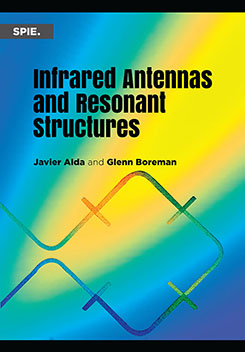
Glenn D. Boreman is Chair of the Department of Physics & Optical Science at the University of North Carolina at Charlotte.
He served as the 2017 President of SPIE.
He received the BS in Optics from University of Rochester, and the PhD in Optics from University of Arizona.
From 1984 to 2011 he was on the faculty of the University of Central Florida, where he supervised 25 PhD students to completion.
Prof. Boreman is coauthor of the graduate textbooks Infrared Detectors and Systems and Infrared Antennas and Resonant Structures, and author of Modulation Transfer Function in Optical & Electro-Optical Systems and Basic Electro-Optics for Electrical Engineers.
He has published more than 190 journal articles in the areas of infrared sensors and materials, optics of random media, and image-quality assessment.
He is a fellow of SPIE, IEEE, the Optical Society of America, and the Military Sensing Symposium.
He served as the 2017 President of SPIE.
He received the BS in Optics from University of Rochester, and the PhD in Optics from University of Arizona.
From 1984 to 2011 he was on the faculty of the University of Central Florida, where he supervised 25 PhD students to completion.
Prof. Boreman is coauthor of the graduate textbooks Infrared Detectors and Systems and Infrared Antennas and Resonant Structures, and author of Modulation Transfer Function in Optical & Electro-Optical Systems and Basic Electro-Optics for Electrical Engineers.
He has published more than 190 journal articles in the areas of infrared sensors and materials, optics of random media, and image-quality assessment.
He is a fellow of SPIE, IEEE, the Optical Society of America, and the Military Sensing Symposium.
This will count as one of your downloads.
You will have access to both the presentation and article (if available).
Experimental observation of spatial correlation of scintillations from an extended incoherent source
Terahertz/millimeter wave characterizations of soils for mine detection: transmission and scattering
This course introduces each of the following basic areas of optics, from an engineering point of view: geometrical optics, image quality, flux transfer, sources, detectors, and lasers. Basic calculations and concepts are emphasized.
Modulation transfer function (MTF) is used to specify the image quality achieved by an imaging system. It is useful in analysis of situations where several independent subsystems are combined. This course provides a background in the application of MTF techniques to performance specification, estimation and characterization of optical and electro-optical systems.
The course covers the fundamentals of infrared sensing from first principles. Topics include infrared optical systems, infrared materials, image quality; radiometry and flux-transfer calculations; blackbody sources and spectral distribution; thermal and photon detector mechanisms, spectral responsivity; sensor noise sources; sensor figures of merit (noise-equivalent power and D*); system figures of merit (detection range, noise-equivalent temperature difference, minimum resolvable temperature difference). We place emphasis on practical back-of-the-envelope calculations and conceptual understanding.
This course covers the range of topics necessary for the understanding of modern infrared-systems design. Practical engineering calculations are highlighted, with examples of trade studies illustrating the interrelationships among the various hardware characteristics. This course is comprised of four sections.
Section 1 introduces the geometrical optics concepts including image formation, stops and pupils, lens combinations, image quality, and infrared properties of materials. In Section 2 the essentials of radiometry necessary for the quantitative understanding of flux transferred are covered. These concepts are then developed and applied to flux-transfer calculations for blackbody and graybody sources. Remote temperature measurements are then used as an illustration of these radiometric principles. Section 3 is devoted to fundamental background issues for optical detection-processes. It compares the characteristics of photon detectors and thermal detectors with an emphasis on spectral responsivity, D*, and noise issues. With this background, Section 4 considers the systems-design aspects of IR imagers. The impact of scan format on signal-to-noise ratio is described, and the engineering tradeoffs inherent in the development of infrared search systems are explained. Figures of merit such as MTF, NETD, and MRTD are examined for the performance metrics of thermal sensitivity and spatial resolution of thermal imaging systems. The interrelationships among the design parameters are identified through trade-study examples.
View contact details
No SPIE Account? Create one





